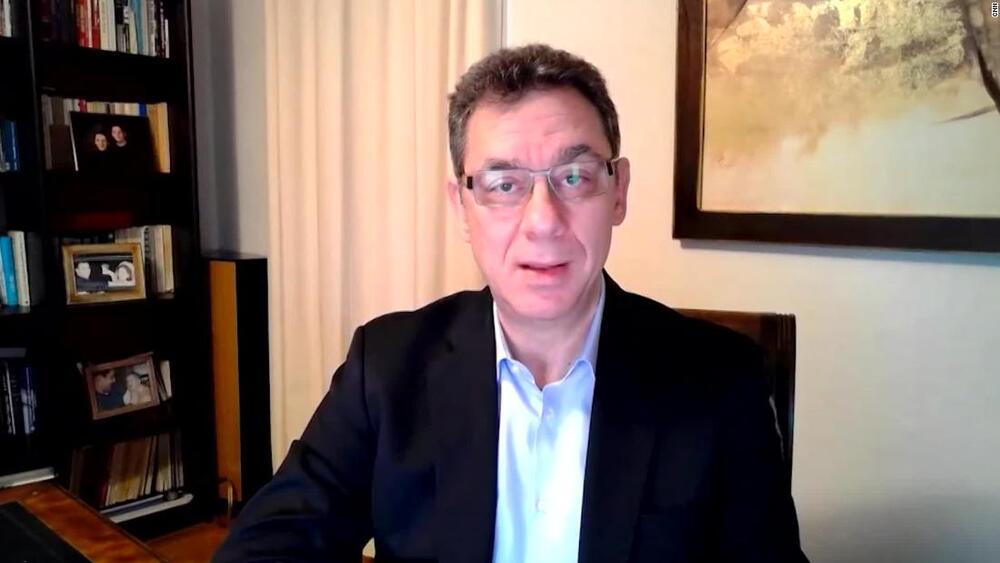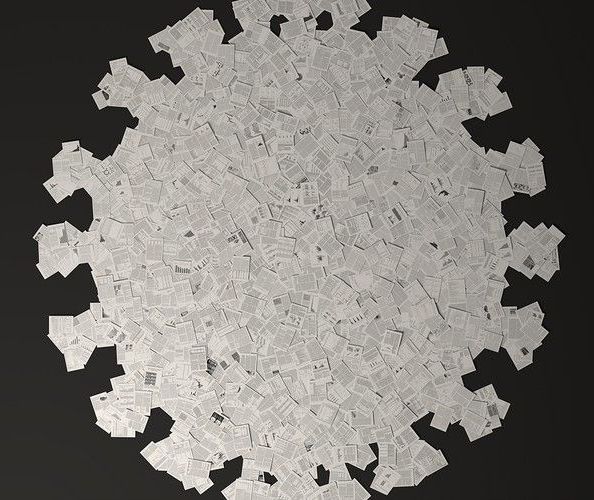Pfizer CEO Albert Bourla speaks with CNN’s Sanjay Gupta as the company prepares to roll out doses of the Pfizer-BioNTech Covid-19 vaccines in the US.



Researchers at the Francis Crick Institute and University College London have rebuilt a human thymus, an essential organ in the immune system, using human stem cells and a bioengineered scaffold. Their work is an important step towards being able to build artificial thymi which could be used as transplants.
The thymus is an organ in the chest where T lymphocytes, which play a vital role in the immune system, mature. If the thymus does not work properly or does not form during foetal development in the womb, this can lead to diseases such as severe immunodeficiency, where the body cannot fight infectious diseases or cancerous cells, or autoimmunity, where the immune system mistakenly attacks the patient’s own healthy tissue.
In their proof-of-concept study, published in Nature Communications today, the scientists rebuilt thymi using stem cells taken from patients who had to have the organ removed during surgery. When transplanted into mice, the bioengineered thymi were able to support the development of mature and functional human T lymphocytes.


Blue Moon. Strawberry Moon. Supermoon. Snow Moon. Blood Moon. Earth’s favourite satellite buddy has a name for every occasion. Yet the most glorious view of the full Moon we’ve seen to date has no name.
That’s probably because it’s not indicative of an occasion, but a way of looking at our satellite. With your naked eyes, you would never see the rainbowy, soap-bubble-like view of the Moon as pictured above.
But that’s what it looks like to the Australian Square Kilometre Array Pathfinder (ASKAP), an incredibly powerful radio telescope array located in the desert of Western Australia.

Potential, And Possibilities is off to a great start — Three weeks in and 25 awesome guests from academia, industry, and government, all focused on building a better tomorrow — Please come subscribe and enjoy all our current and future guests — Much more to come! — #Health #Longevity #Biotech #SpaceExploration #ArtificialIntelligence #NeuroTechnology #RegenerativeMedicine #Sports #Environment #Sustainability #Food #NationalSecurity #Innovation #Future #Futurism #AnimalWelfare #Equity

A phenomenon first detected in the solar wind may help solve a long-standing mystery about the sun: why the solar atmosphere is millions of degrees hotter than the surface.
Images from the Earth-orbiting Interface Region Imaging Spectrograph, aka IRIS, and the Atmospheric Imaging Assembly, aka AIA, show evidence that low-lying magnetic loops are heated to millions of degrees Kelvin.
Researchers at Rice University, the University of Colorado Boulder and NASA ’s Marshall Space Flight Center make the case that heavier ions, such as silicon, are preferentially heated in both the solar wind and in the transition region between the sun’s chromosphere and corona.

Andrew Glester reviews Not Necessarily Rocket Science: a Beginner’s Guide to Life in the Space Age by Kellie Gerardi
When the Apollo 11 astronauts landed on the Moon in 1969 the whole world stopped, just for a moment, and looked up. We stepped out into the universe and firmly entered the Space Age, which had begun with Sputnik just 12 years earlier. For many Physics World readers, the scientific and engineering exploits of those early achievements are a source of intrigue and no little excitement. From those crackled first words on the Moon, to images of the boot print in the lunar surface, or the new perspective of our world – the fragile blue marble suspended in darkness – humanity’s most impressive engineering effort has had a huge impact on our collective consciousness.
Commercial spaceflight industry professional and science communicator Kellie Gerardi was one of the many who wanted to be part of the nascent Space Age. But with a degree in film studies rather than aerospace engineering, her non-traditional path in the space industry is a key theme of her new book Not Necessarily Rocket Science: a Beginner’s Guide to Life in the Space Age. With more than 122, 000 followers on Instagram, Gerardi is something of a social-media star, and her book serves as part mission statement, part witness statement and part manifesto. They say that those converted to a cause are often the most evangelical and Not Necessarily Rocket Science brims with Gerardi’s passion – not just for the science and engineering of space exploration, but also for its democratization.


For those who want to exercise both their arms and legs when riding a bike! 😃
Cycle using arms and legs for a full body workout.
More info 👉🏻 https://bit.ly/37gySGU